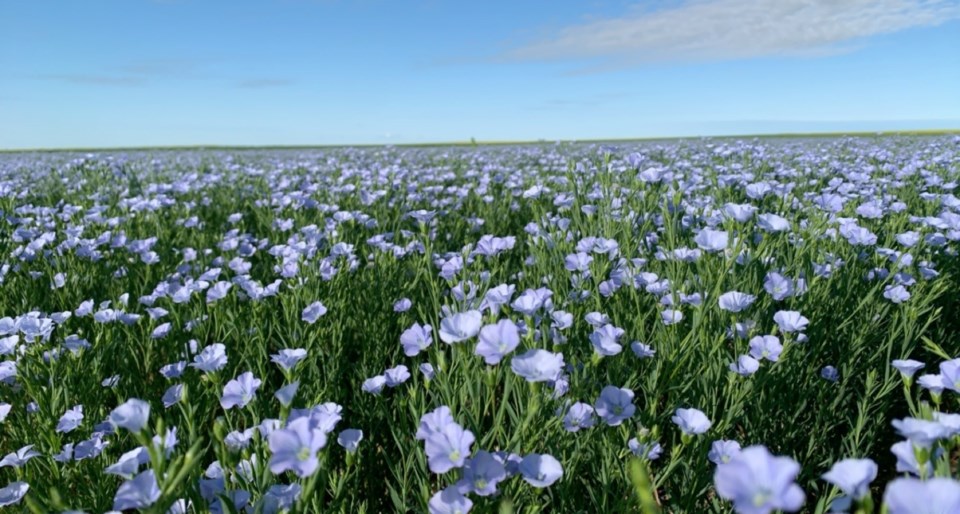SASKATCHEWAN — The Saskatchewan Ministry of Agriculture released its final Crop Report of the year last week – a summary of what transpired this growing season.
Tyce Masich, a crops extension specialist with the Saskatchewan Ministry of Agriculture based in Outlook, described it as a mixed bag.
Seeding time in May and June got off to a wet and cool start with plenty of rain, providing optimism for a lot of producers. But that yield potential was drastically affected by hot, dry weather in July and August which raised concerns. The drier weather allowed producers to start harvest early and managed to get it done by October. Farmers are now hoping for additional moisture before winter arrives. Masich says yields for most crops were slightly above the 10-year average while others were below. The higher yields were in the East-Central and Northeast regions and the lower yields in the Southwest and Southeast where it was hotter and drier.
Winter wheat, fall rye, and all pulse crops such as lentils and field peas were above the 10-year average for yield; winter wheat averaged 46 bushels per acre (bpa), fall rye 52 bpa, field peas 36 bpa, soybeans 30 bpa, lentils 1,306 pounds per acre, and chickpeas 1,319 pounds per acre.
Flax was the only oilseed crop to yield above the 10-year average at 23 bushels per acre, while canola and mustard were below average with canola yielding 33 bpa and mustard 837 pounds per acre.
Among spring-seeded cereal crops, hard red spring wheat averaged 46 bushels per acre, other spring wheat varieties averaged 52 bpa, durum 33 bpa, barley 63 bpa, oats 79 bpa, and canary seed 1,306 pounds per acre.
“I wouldn’t say it was an outstanding year by any means but it’s definitely a good sign that a lot of crops, especially crops like wheat and barley are above that 10-year average, which is good given the dryer (conditions) we’ve had for the last few years,” said Masich “Yield really varies by region in the province and that’s mainly due to just different amounts of precipitation that farmers got during the growing season.”
For grain grades, Masich says most high-acreage seeded crops in the province were in the top two grading categories. Eighty-nine per cent of canola received a grade of 1 CAN and nine per cent got a grade of 2 CAN – which is OK. Sixty per cent of hard red spring wheat was graded 1 CW while another 31 per cent was graded 2 CW. Forty-three per cent of field peas and 40 per cent of lentils fall were graded 1 CAN, while 50 per cent of lentil and field pea crops were graded 2 CAN.
“Pretty much all crop graded in the top two categories, which is definitely a very good sign for producers,” Masich noted.
“The heat did lead to some light bushel weights for cereals and also there were some rains in September when crops were coming off which caused bleaching to some cereal crops which, again, hurts crop quality but overall crops graded pretty well in Saskatchewan which producers are happy with.”
Silage yields for this year were slightly below last year’s. The crop report said “this year’s average silage yield for the province is 6.37 tons per acre, which is lower than the seven tons per acre reported last year. The East-Central and Southern regions experienced above-average yields while average yields in West-Central and Northern regions were below the provincial average.
Livestock producers are happy to see hay yields higher this year than they were last year. On dryland acres, alfalfa averaged 1.78 tons per acre, brome hay averaged 1.79 tons per acre and green feed averaged 2.25 tons per acre. Under irrigation, yields for alfalfa were 3.36 tons per acre, 3.25 tons per acre for brome hay and 3.57 tons per acre for greenfeed. Most producers in the province reported good to excellent hay quality in their first cut. Some producers got a second hay cut and they reported good to excellent quality.
Hay prices vary throughout Saskatchewan, but the average price of alfalfa is 134.16 dollars per ton, $120.70 per ton for brome and $126.25 per ton for greenfeed. Straw and standing hay are cheaper as average prices are $51.05 per ton and $57 per ton, respectively.”
The report also indicated that “current topsoil moisture conditions are better than they were heading into last winter. Provincial cropland topsoil moisture is rated as 49 per cent adequate, 44 per cent short and seven per cent very short. For provincial hayland, topsoil moisture is 42 per cent adequate, 45 per cent short and 13 per cent very short. Pasture topsoil moisture around the province is 37 per cent adequate, 45 per cent short and 18 per cent very short. Additionally, 35 per cent of Saskatchewan pastures are in good condition before the winter, 34 per cent are fair, 24 per cent are in poor condition and seven per cent are in very poor condition.”
Producers continue post-harvest work, including harrowing, applying fall fertilizer, drying grain, moving cattle home and hauling bales before freeze-up.




